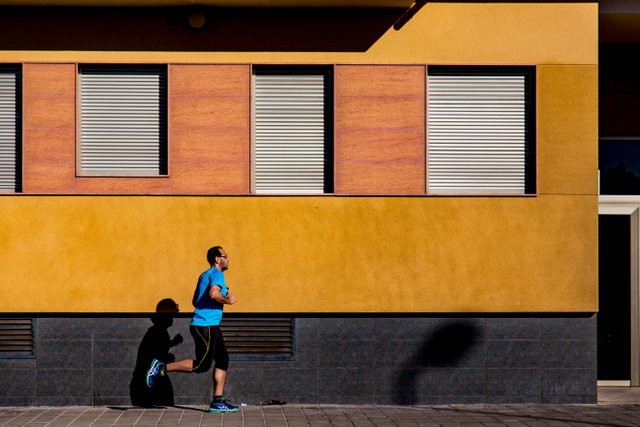in Our Running ABC's, O is for Overstriding

Image courtesy of pexels.com and is a good example of stride length.
We have been posting consistently for the past couple of week, so let's not stop now. To continue with our running ABC's, O is for Overstriding!
When we think about causes of running injuries not a lot of thought is given to overstriding, although overstriding has been shown to increase stress on the body and has been shown is not the optimal way to run and slows your momentum.
Over striding also results in heel striking, with your heel impacting the ground instead of the mid or forefoot landing first. Over time this has shown to result in bad injuries of the knee due to a straighter knee when running, and ankle and foot injuries from the heavier heel strike.
Running stride is the distance from where your foot hits the ground back to the center of your body. Once the place where our foot hits the ground hits a certain length, it is considered to be overstriding. You need to also remember that as you stride length increases, the higher your body is moving when you run, resulting in more impact on the body and wasted energy that should be used to moving you forward.
In the image above, you can see that the runners foot is landing on the groud underneath the center of his mass...Although we can't see the rest of his stride, you could say that he is not overstriding from this image.
How to Know If You Are Heel Striking
The best way to tell if you are overstriding, is to undergo a running analysis. You will need to find a clinician that has a good understanding of running biomechanics and is able to review your running under a high speed video. You could also try getting a friend to video your running technique as any major overstriding should be noticeable especially if it is combined with a heel strike and exaggerated vertical movement.
Ways to Stop Overstriding
The first way you can help any issues with overstriding is to look at your cadence. As we discussed with the letter C, in our running ABC's(https://steemit.com/running/@run.vince.run/the-running-abc-s-c-is-for) gradually increasing your cadence to make sure you are fitting into the desired 180 to 200 steps per minute. If you are out of this range try concentrating for about a minute at a time where you try to increase your cadence by about 5 steps at a time.
Another way to help overstriding is to look at reducing the amount of cushioning in your running shoes. As less cushioning will lead to your feet naturally striking the ground with less force.
Make note that both of these techniques should be performed gradually over time to reduce any extra impact on the body.
If you missed any of the previous five posts, you can see them at the following link:
https://steemit.com/running/@run.vince.run/j-is-for-in-the-running-abc-s
https://steemit.com/running/@run.vince.run/in-the-running-abc-s-k-is-for-kenya
https://steemit.com/running/@run.vince.run/for-the-running-abc-s-l-is-for-lactic-acid
https://steemit.com/running/@run.vince.run/in-our-running-abc-s-m-is-for-marathon
https://steemit.com/running/@run.vince.run/n-is-for-negative-split-in-the-running-abc-s